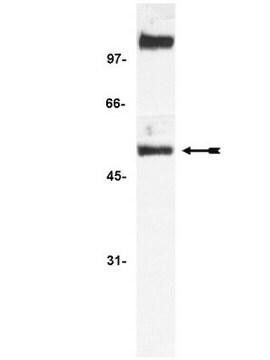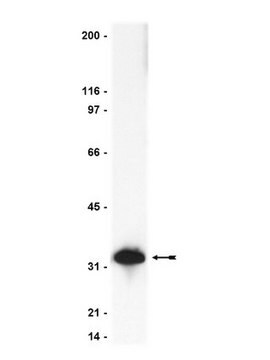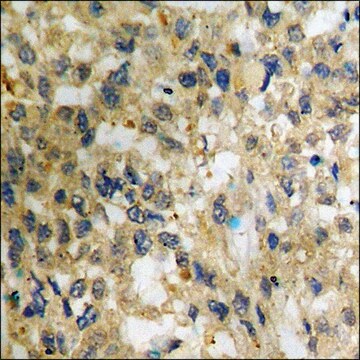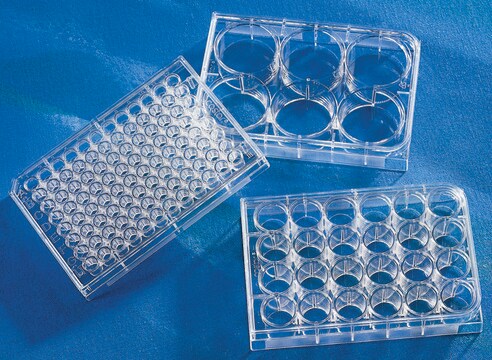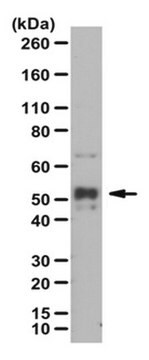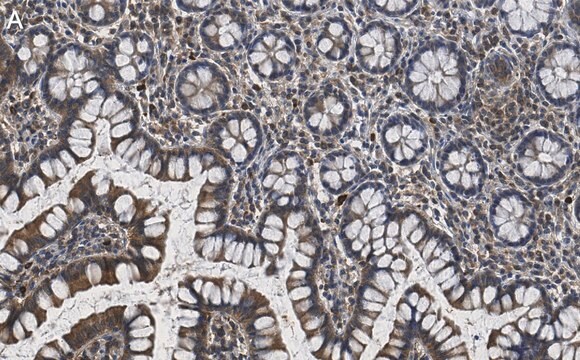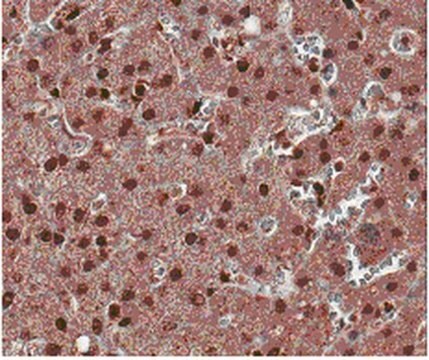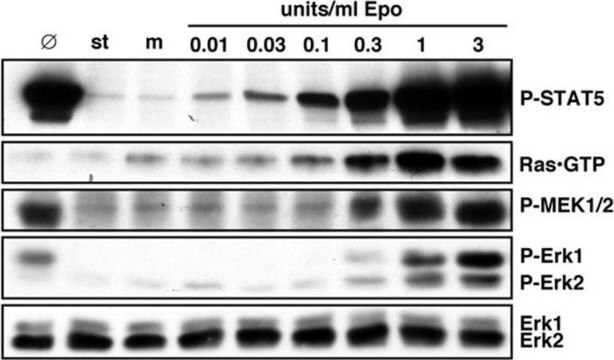05-361
Anti-NFκB p52 Antibody
Upstate®, from mouse
Sinônimo(s):
DNA-binding factor KBF2, Lymphocyte translocation chromosome 10, Oncogene Lyt-10, nuclear factor of kappa light chain gene enhancer in B-cells 2, nuclear factor of kappa light polypeptide gene enhancer in B-cells 2, nuclear factor of kappa light polypept
About This Item
Produtos recomendados
fonte biológica
mouse
Nível de qualidade
forma do anticorpo
purified antibody
tipo de produto de anticorpo
primary antibodies
clone
monoclonal
reatividade de espécies
human
fabricante/nome comercial
Upstate®
técnica(s)
electrophoretic mobility shift assay: suitable
immunoprecipitation (IP): suitable
western blot: suitable
Isotipo
IgG2a
nº de adesão NCBI
nº de adesão UniProt
Condições de expedição
dry ice
modificação pós-traducional do alvo
unmodified
Categorias relacionadas
Descrição geral
Especificidade
Imunogênio
Aplicação
4 µg of a previous lot immunoprecipitated NFκB p52 and its p100 precursor from 500 µg of HeLa nuclear extract cell lysate.
Gel Shift Assay:
A previous lot of this antibody used 2 µg per gel shift assay (Bours, V., 1993).
Epigenetics & Nuclear Function
Transcription Factors
Qualidade
Western Blot Analysis:
0.5-2 µg/mL of this lot detected NFκB p52 and its p100 precursor in HeLa nuclear extract. A previous lot detected NFκB p52 and its p100 precursor in human Raji cell, but not in mouse 3T3/A31 cell and rat PC 12 cell lysates. Highly recommended for western blotting.
Descrição-alvo
forma física
Armazenamento e estabilidade
Handling Recommendations:
Upon receipt, and prior to removing the cap, centrifuge the vial and gently mix the solution. Aliquot into microcentrifuge tubes and store at -20°C. Avoid repeated freeze/thaw cycles, which may damage IgG and affect product performance.
Nota de análise
Positive Antigen Control: Catalog #12-303, Jurkat cell lysate.
Outras notas
Informações legais
Exoneração de responsabilidade
Não está encontrando o produto certo?
Experimente o nosso Ferramenta de seleção de produtos.
recomendado
Código de classe de armazenamento
12 - Non Combustible Liquids
Classe de risco de água (WGK)
WGK 1
Ponto de fulgor (°F)
Not applicable
Ponto de fulgor (°C)
Not applicable
Certificados de análise (COA)
Busque Certificados de análise (COA) digitando o Número do Lote do produto. Os números de lote e remessa podem ser encontrados no rótulo de um produto após a palavra “Lot” ou “Batch”.
Já possui este produto?
Encontre a documentação dos produtos que você adquiriu recentemente na biblioteca de documentos.
Artigos
The term neurodegeneration characterizes a chronic loss of neuronal structure and function leading to progressive mental impairments.
Nossa equipe de cientistas tem experiência em todas as áreas de pesquisa, incluindo Life Sciences, ciência de materiais, síntese química, cromatografia, química analítica e muitas outras.
Entre em contato com a assistência técnica